When Ocado entered the grocery delivery market at the dawn of the millennium, the landscape was quite different. In 2000, the company consisted of three employees in a single room, thinking of how to respond to an emerging trend of consumers shopping online. In the company’s early days, this business model was new, but Ocado’s marketing strategy propelled them to become the U.K.’s largest online grocery platform.
The company now makes about 183 deliveries per van per week, providing citizens across the U.K. with groceries and other essentials. But Ocado didn’t grow overnight. They didn’t turn a profit until 2015, and then they decided to invest in several technological improvements that gave them a much-needed push. This transformation along with a holistic marketing strategy helped the company grow into one of the most popular online U.K. retailers. In this article, we will analyze how and why Ocado achieved such great results and provide some data-driven inspiration for your future business decisions.
Table of Contents
- > History of Ocado: From 2000 ’til today
- > The marketing strategies that led Ocado to the top
- > Ocado’s eCommerce Website
- > Technologies that would help Ocado enhance its customer engagement strategy
- > Worth-mentioning technologies Ocado is using
- > Latest news from the grocery retailer
- > Worthwhile Ocado statistics you can’t ignore
- > Automate the Ocado way
History of Ocado: From 2000 ’til today
Ocado was founded by three former Goldman Sachs merchant bankers who partnered with British grocer Waitrose to offer high-quality groceries through online ordering and delivery. The company launched an iPhone app in 2009, making it easier for customers to order groceries without logging into a computer.
It went public in 2010 and began to expand its offerings. To offer better customer service and a wide range of grocery options to customers, Ocado partnered with multiple companies and invested heavily in technology. In 2015, it began offering the Smart Platform which other grocery stores across the U.K. could use to manage online ordering and delivery. In 2017, Ocado began developing robotic and machine learning systems to automate parts of the business from supply to delivery, earning the Technology Hero of the Year Award at the 2017 V3 Technology Awards.
Now, Ocado has evolved from a simple online grocer to a leader in technology and engineering. Its innovative automated warehouses and other technological advances have allowed the company to adapt to ever-changing customer needs and expectations. Ocado’s brand has been built on extraordinary customer experience, and these new technologies deliver on this brand promise.
The marketing strategies that led Ocado to the top
Ocado’s growth clearly came from seven key factors. Notably, the company has collaborated with others in various industries to expand its reach. Ocado could have held its technology close, refusing to offer it to competitors, but the Smart Platform, which essentially offers competitors access to the same technology, has allowed everyone in the business to improve customer service.
Ocado has deals in place to share its automated warehouse technology with grocery providers in eight countries, which is propelling growth. We have analyzed Ocado’s key marketing strategies for you to apply to your own business.
Key strategy #1: The omnichannel approach
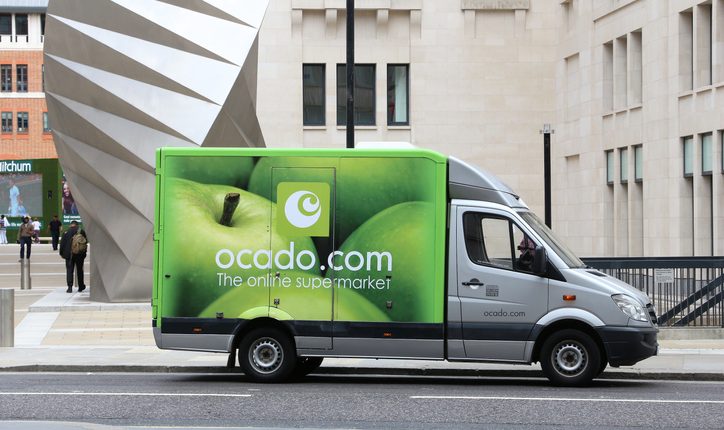
Since its inception, the Ocado marketing strategy has been built around customer experience, which includes an omnichannel approach to engagement. It was an early adopter of smartphone technology enabling people to place and manage orders from their phones. In 2017, Ocado partnered with the company Selligent to communicate with customers through phone, social media, and email.
As it has with many technologies, Ocado was an early advocate of using artificial intelligence and machine learning to categorize customer emails. The Ocado omnichannel strategy freed up time for customer service reps to respond to challenging customer issues and offer better service.
Key strategy #2: Automation to its fullest
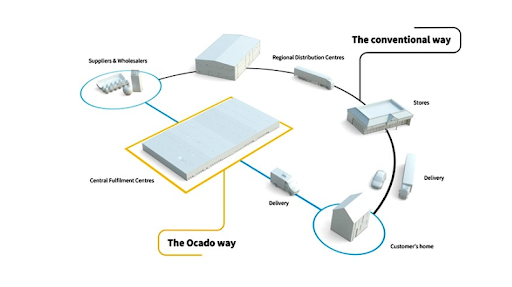
Ocado’s automated warehouses speed up the process from ordering to delivery. Machine learning helps warehouse robots anticipate when customers will order certain items based on a variety of factors, including interaction with each customer. The robots are arranged throughout the factory and controlled with a strategic system that keeps them from colliding.
Before automated warehouses, Ocado’s distribution centers ran with a series of conveyor belts that would often experience traffic jams during high volume order times. The new system is more efficient and accurate, speeding up the process without sacrificing customer service.
Key strategy #3: Taking the supply chain one step ahead
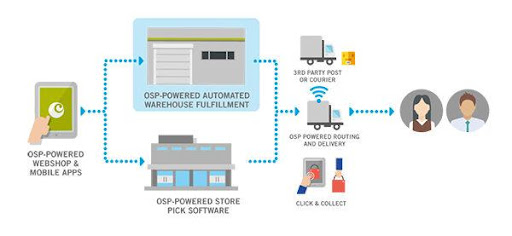
Being able to anticipate customers’ needs is key to fulfilling them. To automate its warehouse and delivery system, Ocado begins by anticipating customer demand. Each fulfillment center has a digital counterpart used to simulate conditions. Company personnel can use historical data to see what people will be ordering when they will order it, and how quickly it needs to go out based on how many perishable items are included.
Using these scenarios, Ocado runs simulations within the warehouse to see how quickly orders can be fulfilled. While the models aren’t perfect, they help Ocado identify gaps in the system that could hold up customer orders. Fixing glitches on virtual customers helps ensure that actual customers will receive a great experience.
Key strategy #4: Innovative approaches to challenges
Instead of shying away from complex problems, Ocado has chosen to face them using what they’ve learned in the past. When the company was founded in 2000, its strategy was thought to be unsustainable, mainly due to the variety of products people buy from a grocery store. Unlike other retailers, groceries often have to be stored, packed, and shipped at a variety of temperatures.
To meet these challenges, the Ocado marketing strategy delved into the world of technology and is now known more for its tech than its grocery delivery. The company developed technology to meet solutions, partnering with and acquiring companies when they couldn’t find solutions in-house. Ocado’s eCommerce solutions provide other grocers with the technology they need to keep their customers happy.
Key strategy #5: Reliable customer experience

Successful order fulfillment is one factor that makes Ocado so popular with customers. Its substitution rate for missing items is far lower than others in the grocery delivery game. Since substitutions dampen the customer experience, Ocado gives users access to real-time inventory levels. They can see what’s not available and substitute a product they actually want instead of having a representative or a robot choose something for them.
Key strategy #6: Personalization

Like much of the world, the UK experienced a boom in online grocery delivery in response to the COVID 19 pandemic. Since 2020, Ocado has been faced with more competition and has needed to adapt to stay ahead. While the company still sets itself apart with high quality and exceptional customer service, the average customer might not know how Ocado is different. At this time, the Ocado marketing strategy shifted to highlight its breadth of options to customers.
In 2021, Ocado launched a new ad campaign aimed at highlighting how customers can personalize their experience. “ There’s an Ocado Just For You” shows customers the broad range of products available and demonstrates how they can use the platform to meet their own needs. Along with TV ads, this campaign was launched as part of Ocado’s digital marketing strategy and still serves as the official tagline in social media posts.
Ocado operates different social media platforms for each of its divisions, using the simple name “Ocado” to build the brand. This social media brand is different than “Ocado Technology” and “Ocado Group.” It focuses on groceries sharing recipes and other lifestyle footage to inspire customers.
Key strategy #7: Strategic partnerships
Ocado helps a variety of stakeholders along with its end users. It helps strategic partners offer better service to their customers, partnering with grocery chains worldwide to give the Ocado experience to more than just U.K.-based people. Food manufacturers also appreciate the opportunity to deliver their products to customers through Ocado’s fulfillment centers.
The company is taking this idea a step further. It has recently partnered with CitrusAd to provide advertising opportunities on the Ocado platform. Part of the Ocado promotion strategy is to boost vendors who work with the company. The advertising program was launched in July 2021, and brands who participated in the initial rollout reported an average of 300–400% return on ad spend.

Key strategy #8: How Ocado handled the pandemic
Its previous commitment to automation, omnichannel approach and strong innovation-driven mentality, were key success factors for Ocado that played a major role in the venture’s success during the COVID-19 era.
Tip: Do not skip watching the attached video. Thank us later.
Ocado’s eCommerce Website
As one of the top eCommerce brands in the world, Ocado is one of the most highly evaluated brands. They have mastered the art of eCommerce conversions. Here is an assessment of four-page templates of Ocado’s new website outlining best practices and mistakes you should avoid.
A. Analyzing Ocado’s home page
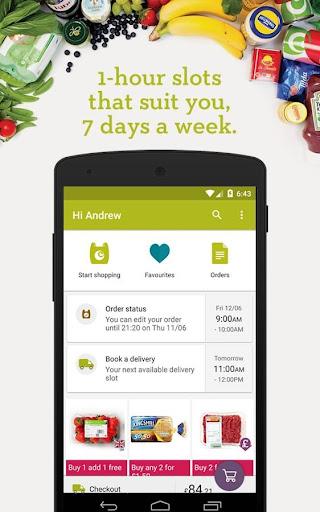
What we liked:
- The promotional grid banner. After bypassing the Ocado login website, users can see a personalized grid of promotional items they might be interested in ordering.
- The navigation bar. Users can click on the shopping bag icon to start their orders instead of looking all over the app for a button. Giving to users the option to find what they are looking for easily and effortlessly is of paramount importance.
- Order status. A user’s order status appears prominently on the home page, making it easy for them to log in and track their order.
- The attention-grabbing part of the content is placed above-the-fold. All the significant content on Ocado’s homepage is placed above the fold to ensure maximum visibility. The user is able to see all the necessary information like products on sale, interesting deals, links, and CTAs without a perpetual scroll.
- Eye-catching top-offers section. It is well known that top offers have already many buyers. Ocado’s homepage highlight top offers so to push even more users to select them.
- The autocomplete option is provided on the search bar. Ocado’s homepage gives you a big range of autocomplete suggestions when you start typing in the search bar. This is a great feature since it makes it easier for the users to find in less time what they are searching for.
What we didn’t:
- Filter navigation isn’t easy. Users should be able to pop onto the app and filter their selections so they can shop more efficiently.
- One-click can be glitchy. Users have reported that the one-click feature puts them into an endless loop from which they can’t return.
- Richer desktop vs mobile version. The desktop version contains the brand’s value proposition, top-rated products, and seasonal items as well. All these three elements are missing from the mobile version which is way simpler than the desktop version.
B. Analyzing Ocado’s category page
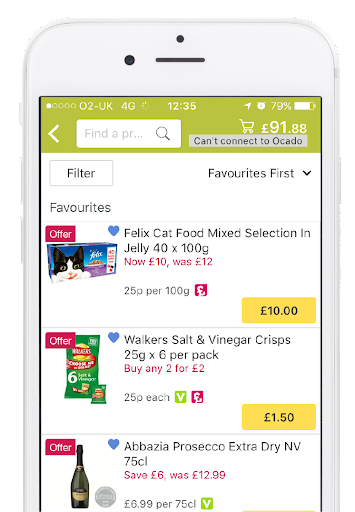
What we liked:
- Sticky cart functionality. As a user scrolls through various product categories, products they’ve liked or purchased in the past follow them, making it easy to add them to their cart.
- Sticky Categories. Both the mobile and desktop versions have a sticky layer that allows the user to scroll horizontally in order to navigate through popular subcategory pages, without ruining the UX.
- Sophisticated facets. The multiple filters —placed on the left— cover a huge range of characteristics, which is giving the user to find exactly what they want.
- Clear page navigation. The users always know where they are on the site and how to go back and forth.
- Clear and consistent images. The product’s images are clear and consistent by having the same size and background thus giving a sense of homogeneity.
- Clearly organized. Like the shelves of an in-person supermarket, the Ocado app is organized, and products are easy to find with lots of subcategories to find what you are looking for.
- Lots of product ratings. Users can scroll through a list of products with clear star ratings underneath each category. Anyone having a hard time with their purchase can use this feature to help them decide.
What we didn’t:
- Filter navigation could be easier. Again, it’s hard to navigate filters in product categories.
- It can be hard to bypass the offers. In every product category, products on sale appear at the top of the list. Customers looking for specific products can search for them, but this feature also brings up a lot of options.
- Lack of category descriptions. When the users enter a category page are able to see only the products included and no juicy details or smart tips about the specific product family.
C. Analyzing Ocado’s product page
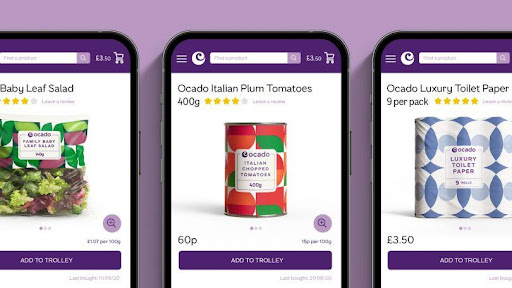
What we liked:
- Customer reviews. When a user clicks on a certain product, the reviews come up as a part of the description, helping them figure out if they’ll like it.
- Informative and engaging product descriptions. Each product page features a detailed description, so users know what to expect when they get their delivery. Information provided covers a huge range from product details and their usage to -very useful ones-nutrition and ingredients.
- Similar products feature. If a user is interested in comparison shopping, the “similar products” feature makes it easy.
- Extensive variety of product photos. Even when a visitor visits an ice cream-related SKU, the product includes more than 10 different photos, from the packaging to the nutritious info.
What we didn’t:
- No-pinch zoom. Product descriptions are pretty small, and users can’t pinch zoom. Unless they adjust the settings, they might not be able to read product pages.
- The “add to trolley” feature could be more eye-catching. Right now, it’s just a button at the bottom of the page.
D. Analyzing Ocado’s checkout process
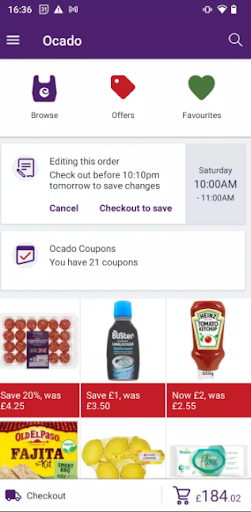
What we liked:
- Crystal clear & accurate order delivery estimation. This greatly reduces consumers’ uncertainty.
- Coupon display. It’s easy to see how many coupons customers have used per order, and they can see their savings.
- Long edit times. The Ocado app gives users a large window to edit their orders.
What we didn’t:
- Mysterious favorites. Ocado’s algorithms don’t always work, and users have reported that they see favorited items that they don’t want.
- Rigid time slots. During peak times it can be hard to schedule a delivery.
Technologies that would help Ocado enhance its customer engagement strategy

ContactPigeon’s omnichannel chat tool would help Ocado provide meaningful customer engagement through multiple platforms. This platform saves every customer interaction for personalized service tailored to each customer. The Ocado marketing strategy would be enhanced with automated messages including abandon cart notifications and chatbot interaction.
The archived conversations would help the platform target each user personally, showing them ads for products they’d be more likely to buy. This is a win-win for Ocado and its partners advertising on the app.
Worth-mentioning technologies Ocado is using in their marketing mix.
We scanned Ocado’s U.K. website. Here are some of the most interesting technologies we spotted:
- Digital twins. This tool lets Ocado create a digital mirror of each distribution center. The company uses this tool to simulate the order selection and delivery process to help fulfillment robots at each center. That way, it can iron out potential delivery hiccups in the simulation instead of losing time in the actual warehouse.
- Instant order. Ocado’s “instant order” feature helps the app learn a customer’s behavior over time. This makes it easier for the app to anticipate what each shopper buys to make personalized recommendations, which can help increase how much they spend per order.
- Demand forecasting. Ocado’s demand forecasting tool helps them stock each delivery center. This tool analyzes over 58,000 products and creates predictive models to better manage inventory. Customers get fresher products with fewer out-of-stock notifications.
Latest news from the grocery retailer
While Ocado has been touted as a leader in the online grocery industry, the company has weathered some storms, particularly because of the pandemic.
Slower growth than forecast
Earlier this year, The Guardian reported that sales growth would be half of what they anticipated because of increased competition, inflation, people returning to work, and restaurants reopening.
Source: Ocado halves growth forecast amid cost of living crisis and return to offices
The grocery market is declining
Ocado isn’t the only retailer impacted by a series of economic woes. The whole grocery market is declining as consumers opt to save money instead of buying whatever they want. This trend has seen the average customer basket fall by about 9% over last year. Reuters reports that this is partially due to a cost-of-living problem plaguing countries across the globe.
Source: UK online grocer Ocado Retail cuts growth forecast in tough market
Ocado Group is betting on the future
Even though near-term projections are looking grim, Ocado is focused on its long-term future. Recently, the company announced plans to buy startup company Myrmix, Inc. which is a company specializing in asset handling robotics.
This acquisition aligns with Ocado’s global rollout of its Smart platforms. By acquiring Myrmix, Ocado will be able to set up automated warehouses across the globe, equipping its partners with the resources they need to mirror Ocado’s service delivery in their own warehouses. This helps the Ocado marketing mix because the company can expand its reach.
Source: Ocado Group acquires robotics startup Myrmex for $11M
Continuing to innovate
Ocado Group continues to drive the industry forward through innovation and is sharing its technological innovations with others in the industry. The acquisition of Myrmix has allowed Ocado Group to consider new technologies to make its automated warehouses more functional.
To celebrate and share potential advances, Ocado Group hosted a product event letting partners and other tech innovators tour the sites and see the robots in action. This product conference was a chance for the Ocado Technology team to celebrate its advancements and find new ways to partner with companies driving innovation.
Source: Ocado Beyond 2022 exhibition/conference showcases online grocery disruption
Ocado’s international partners are implementing its technology
With strategic partnerships, Ocado is no longer limited to U.K. economic conditions. It has built a brand and the Ocado marketing strategy around the ability to exceed customer expectations. Partnering with the world’s largest grocers will bring this consistent, quality service delivery to the masses. Ocado’s partner, Kroger, has begun rolling out automated fulfillment networks. The new facility will expand delivery to 250 zip codes within the state.
Source: Kroger High-Tech Fulfillment Network expands to netral ohio
Worthwhile Ocado statistics you can’t ignore
- Ocado’s retail revenue growth over the past year was 4.6%. (Ocado Annual Report)
- Their International Solutions revenue growth over the past year was 301.2%. (Ocado Annual Report)
- Ocado’s 2021 revenue was $3.0 billion U.S. dollars. (Global Data)
- Retail gross profits in 2021 were £737.5. (Ocado Annual Report)
- The website ranked #8 in the U.K.’s food and drink category. (Similar Web)
- The Ocado website receives an average of 10.32 pages per visit. (Similar Web)
Discover more resources about FMCG retailers
- Sainsbury’s Marketing Strategy: Becoming the Second-Largest Supermarket Chain in the UK
- Tesco Case Study: How an Online Grocery Goliath Was Born
- ASDA’s marketing strategy: How the British supermarket chain reached the top
- The Marks and Spencer eCommerce Case Study: 3 Growth Lessons for Retailers
- ALDI’s marketing strategy: The key growth ingredients of the FMCG titan
- Walmart Marketing Strategy: Decoding the Success of the US Multinational Retailer
- Analyzing Lidl’s Marketing Strategy: How the Discount Supermarket Leader Scaled
- FMCG Marketing Strategies to Increase YOY Revenue
Automate the Ocado way
Ocado has shown us that dedication to user experience coupled with the desire to take risks and shake up the game can disrupt an industry. Even if your business doesn’t run on physical robots, you can still take a page out of the Ocado playbook. It may seem like Ocado is keen to be a tech company, but each of its technological innovations has come out of a desire to provide customers with an exceptional experience. The Ocado marketing strategy centers around offering a unique shopping trip for every customer and successful marketing strategies depend on differentiating.
Ocado can do so with AI and machine learning. Similarly, you can use the same tools to customize your customers’ experiences, provide personalized interactions and cultivate meaningful relationships. If you’re running a small eCommerce shop, use the best logistics partner to offer a seamless experience to your customers. Then use tools like those offered by ContactPigeon’s omnichannel customer engagement platform to personalize every step of the customer journey and build a rapport with your own customers.
Even if you’re not interested in shaking up your industry, be adaptable and use the best technology to automate processes that are currently weighing you down. Stop looking through your customer reviews and social media posts to respond to each user individually. Contact us today to find out how you can apply Ocado’s marketing strategy to your brand and achieve optimal results.

Let’s Help You Scale Up
Spending time on Linkedin? Follow us and get notified of our thought-leadership content:




![Benchmarking Growth Strategies of Top Fashion Retailers [Study]](https://blog.contactpigeon.com/wp-content/uploads/2025/11/top-fashion-retailers.jpg)